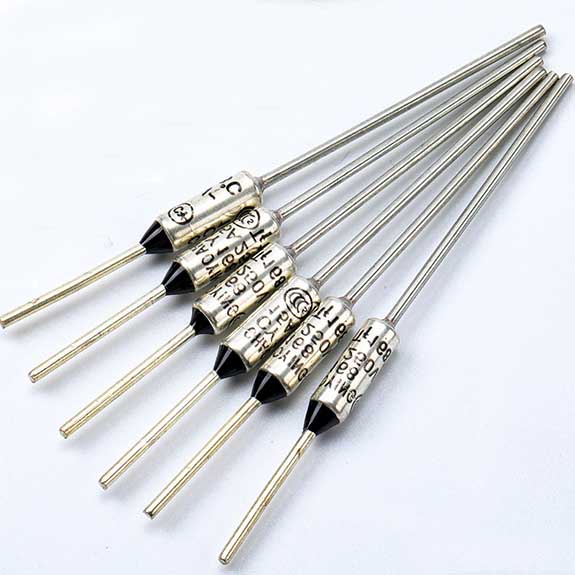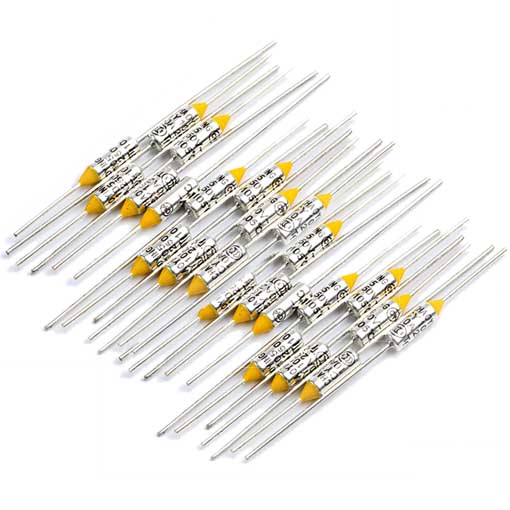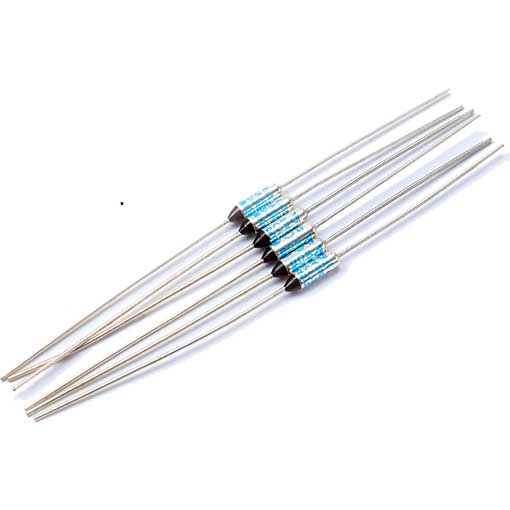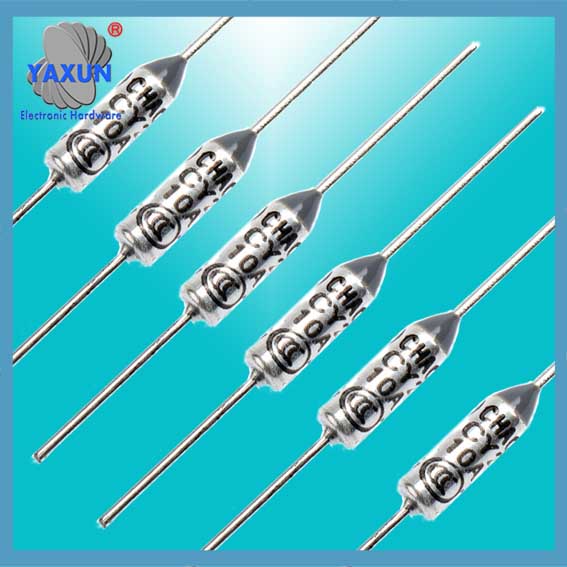제품 카테고리
- 열 회로 차단기 20
- 퓨즈 박스 홀더 36
- 온도 센서 67
- 열 스위치 64
- 자동차 퓨즈 19
- 퓨즈를 볼트로 낮추십시오 7
- 온도 퓨즈 32
- 표면 마운트 퓨즈 12
- 서미스터 22
- PCB 마운트 퓨즈 홀더 27
- 배선 하니스 6
- 블레이드 퓨즈 홀더 17
- 온도 조절기 46
- 전기 퓨즈 14
제품 태그
온도 퓨즈 및 회로 차단기 차단 온도
단락 보호를 달성할 수 있다는 점에서 동일합니다.. 온도 퓨즈의 원리는 도체에 흐르는 전류를 사용하여 도체를 가열시키는 것입니다.. 도체의 융점에 도달하면, 회로 보호 전기 제품 및 라인이 타지 않도록 도체가 녹습니다..
Difference between thermal fuse (파나소닉, SWC, JK, RH) and circuit breaker:
단락 보호를 달성할 수 있다는 점에서 동일합니다.. 온도 퓨즈의 원리는 도체에 흐르는 전류를 사용하여 도체를 가열시키는 것입니다.. 도체의 융점에 도달하면, 회로 보호 전기 제품 및 라인이 타지 않도록 도체가 녹습니다.. It is an accumulation of heat, so overload protection can also be achieved. Replace the melt as soon as it melts down.
The circuit breaker can also realize short circuit and overload protection of the line, but the principle is different. It realizes the open circuit protection by the current magnetic effect (electromagnetic trip), and the overload protection by the thermal effect of the current (not fused, it is not necessary to replace the device). 구체적으로, in practice, when the electrical load in the circuit is close to the load of the fuse used for a long time, the fuse will gradually heat until it blows. As mentioned above, the blow of the fuse is the result of the combined effect of current and time to protect the line. It is one-time. The circuit breaker is a circuit in which the current suddenly increases, and when it exceeds the load of the circuit breaker, it will automatically open. It is a protection to the circuit for an instantaneous current increase, such as when the leakage is large, or when the short circuit, or the instantaneous current is large. When the cause is found out, it can be closed for continued use. As mentioned above, the blow of the thermal fuse is the result of the combined effect of current and time. The circuit breaker will trip as soon as the current exceeds its set value, and the role of time can be almost ignored. Circuit breakers are a common component in low-voltage power distribution. There are also places where thermal fuses are suitable.
지침
⑴ Notes on the use of thermal fuses:
① The protection characteristics of the thermal fuse should be compatible with the overload characteristics of the protected object. Considering the possible short-circuit current, select the fuse with corresponding breaking capacity.
② The rated voltage of the thermal fuse must be adapted to the line voltage level, and the rated current of the thermal fuse must be greater than or equal to the rated current of the melt.
③ The fuse rated currents of the thermal fuses at all levels in the line must be matched accordingly, and the rated current of the previous fuse must be greater than the rated current of the next fuse.
④ The fuse’s melt must use the matching melt as required. It is not allowed to increase the melt or replace the fuse with other conductors.
⑵ Thermal fuse inspection:
① Check whether the rated value of the thermal fuse and the melt matches the equipment to be protected.
② Check the appearance of the thermal fuse for damage and deformation, and for traces of flicker discharge on the porcelain insulation.
③ Check whether the contact points of the thermal fuse are intact, the contacts are tight, and there is no overheating.
④ Whether the fuse signal indicator of the thermal fuse is normal.
⑶ Use and maintenance of thermal fuse:
① When the fuser is blown, carefully analyze the cause of the blowout. The possible reasons are:
1) Short circuit or overload operation and normal fuse.
2) The hot melt has been used for too long, and the melt is erroneously broken due to oxidation or high temperature during operation.
3) There is mechanical damage during the installation of the hot melt, making its cross-sectional area smaller and causing misinterruption during operation.
② When dismantling the melt, the requirements are as follows:
1) Before installing a new melt, find out the cause of the melt failure. If the cause of the melt failure is not determined, do not disassemble and test the melt.
2) When replacing a new hot melt, check whether the rating of the melt matches the equipment being protected.
3) When replacing the new hot melt, check the internal burn of the fuse tube. If the burn is severe, replace the fuse tube at the same time. When the porcelain melting pipe is damaged, it is not allowed to replace it with other materials. Filler-type thermal fuses must be filled with filler when replacing the melt.

1015A 20A 250V 온도 퓨즈

RH RY thermal fuse

Panasonic thermal fuse
③ The thermal fuse should be maintained at the same time as the power distribution device:
1) Clean the dust and check the contact points.
2) Check the appearance of the thermal fuse (remove the fuse tube) for damage and deformation, and for flashing traces on the porcelain.
3) Check the thermal fuse, whether the fuse matches the protected circuit or equipment, and investigate if there is any problem.
4) Pay attention to the N line in the TN grounding system and the ground protection line of the equipment. The use of thermal fuses is not permitted.
5) Maintenance and inspection of the thermal fuse should be in accordance with the safety regulations, cut off the power supply, do not allow the thermal fuse tube to be removed with power on.
4. Thermal fuse adapter
Adapters for thermal fuses include a base, a micro-indicating switch, and a heat sink. The user can make the order in consultation with the thermal fuse manufacturer as required.
ㅏ, the design and operating principle of thermal fuse
● Temperature fuse functional circuits to detect abnormal temperature and cut off. It can detect domestic or industrial heating temperature anomalies and electrical products quickly cu
t off the circuit can be achieved by preventing the effects of fire in unburned.
- Temperature fuse wire type with axial and radial lead type two. Use thermal particles (유기물).
- 안전인증: UL, CSA, VDE, 아기, PSE, 제트기, CQC ... 자격증, EU ROHS 환경 지침
두번째, the application: thermal fuse to prevent overheating of the following areas - Product current: 1ㅏ ,2ㅏ , 3ㅏ, 5ㅏ, 10ㅏ ,15ㅏ, 20ㅏ
온도 퓨즈 브랜드: 타무라, 앉아, NEC, 에머슨, 사자, 먹이다, 파나소닉, SWC, JK, RH
| 모델 | Rated operating temperature(Tf) | 실제 작동 온도 (Ct) | maintaining the temperature(Th) | limit temperature(Tm) | rated voltage (Ur) |
| DS28 | 95℃ | 91±3℃ | 65℃ | 180℃ | 250V |
| DS21 | 102℃ | 98±3℃ | 72℃ | 180℃ | 250V |
| DS04 | 115℃ | 110±3℃ | 85℃ | 180℃ | 250V |
| DS06 | 125℃ | 121±3℃ | 95℃ | 180℃ | 250V |
| DS07 | 130℃ | 125±3℃ | 100℃ | 180℃ | 250V |
| DS08 | 135℃ | 131±3℃ | 105℃ | 180℃ | 250V |
| DS09 | 145℃ | 141±3℃ | 115℃ | 180℃ | 250V |
| DS10 | 150℃ | 145±3℃ | 120℃ | 180℃ | 250V |
문의하기
이메일을 기다리는 중, 이내에 답변해 드리겠습니다. 12 필요한 귀중한 정보를 몇 시간 동안.
 English
English العربية
العربية Български
Български 粤语
粤语 中文(简体)
中文(简体) 中文(漢字)
中文(漢字) Nederlands
Nederlands Suomi
Suomi Français
Français Deutsch
Deutsch Ελληνικά
Ελληνικά Magyar
Magyar Italiano
Italiano 日本語
日本語 한국어
한국어 Polski
Polski Português
Português Română
Română Русский
Русский Slovenščina
Slovenščina Español
Español Svenska
Svenska ภาษาไทย
ภาษาไทย Türkçe
Türkçe Tiếng Việt
Tiếng Việt

